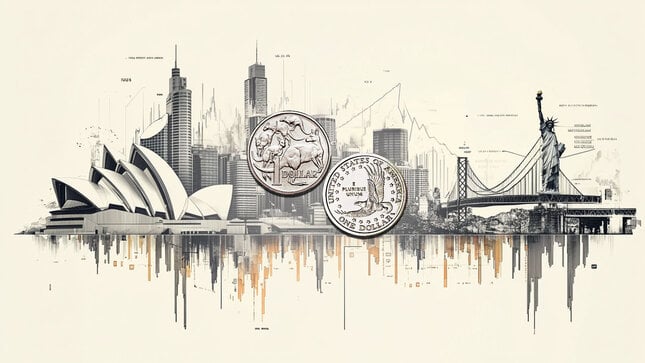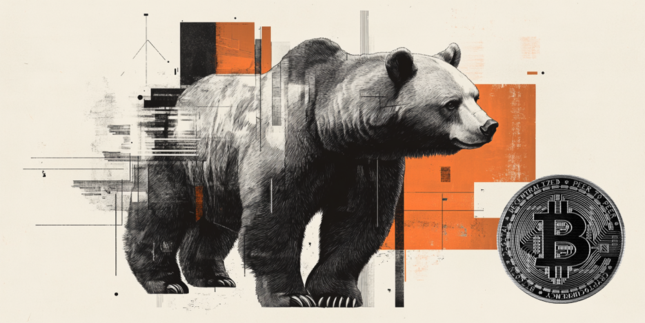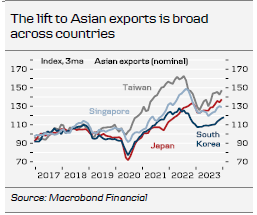-
We point to five signs that the global manufacturing cycle has turned and expect to see further upside in global PMIs across regions over the next 3-6 months.
-
The covid pandemic created big swings in the manufacturing cycle with the pendulum swinging from a huge boost in goods demand to a subsequent bust. We now believe the pendulum is starting to swing back supported by a turn in the inventory cycle and a moderate improvement in goods demand.
-
The expected turn in manufacturing supports a soft landing scenario for the global economy and is one of the reasons we believe central banks will move with caution when they start cutting rates.
For a while we have seen some tentative signs that a turn in the global manufacturing cycle was in sight but broad based evidence was scarce. However, in January we got the most clear sign so far that the deep recession in the industrial sector in 2023 is coming to an end. Global PMI manufacturing for January jumped from 49.0 to 50.0, the biggest monthly increase in 3½ years, and it represented a synchronized increase across regions. We see five reasons that this will mark the inflection point for global manufacturing:
First, Asian manufacturing data has been improving for a while and they tend to lead the global cycle about 2-3 months as economies like China, South Korea, Taiwan and Singapore are manufacturing hubs of key components into final goods, not least semiconductors (one exception to this picture was a big drop in Taiwan export orders in December but we are inclined to believe it was one-off as Taiwan PMI has increased and no other Asian countries have seen a similar drop in orders).
Second, PMIs for the euro area and the US have finally turned. For some time they showed signs of stabilisation but moved sideways at low levels for more than a year reflecting continued recession. In January, however, we saw a quite strong increase in the US ISM manufacturing new orders index and the euro PMI order index increased for the third month in a row. At 44.7 the latter index is still clearly below 50, which signals production is still declining but just at a slower pace than before. However, historically once the index turns it continues higher over the coming year.
Third, financial conditions have eased, which normally is a leading indicator of a turn up in the manufacturing cycle (see chart page 2). For some time, equities have rallied, credit spreads are tighter and bond yields have moved lower. Oil prices are also lower from the peak levels in 2022 adding to the tailwind. This is the evident in both US and Europe.
Fourth, the order-inventory balances in PMI releases indicate that the global inventory cycle is turning. Changes in inventories work as accelerators on the business cycle. During the pandemic, very high goods demand and supply chain challenges drove down inventories and triggered a desire to build higher inventories to be more resilient. Hence, for a while businesses had to lift production above actual demand.
This publication has been prepared by Danske Bank for information purposes only. It is not an offer or solicitation of any offer to purchase or sell any financial instrument. Whilst reasonable care has been taken to ensure that its contents are not untrue or misleading, no representation is made as to its accuracy or completeness and no liability is accepted for any loss arising from reliance on it. Danske Bank, its affiliates or staff, may perform services for, solicit business from, hold long or short positions in, or otherwise be interested in the investments (including derivatives), of any issuer mentioned herein. Danske Bank's research analysts are not permitted to invest in securities under coverage in their research sector.
This publication is not intended for private customers in the UK or any person in the US. Danske Bank A/S is regulated by the FSA for the conduct of designated investment business in the UK and is a member of the London Stock Exchange.
Copyright () Danske Bank A/S. All rights reserved. This publication is protected by copyright and may not be reproduced in whole or in part without permission.
Recommended Content
Editors’ Picks

AUD/USD: Further gains need more conviction
AUD/USD reversed two-daily pullbacks in a row on Tuesday, staging a decent comeback from Monday’s troughs near 0.6220 to the boundaries of the 0.6300 hurdle propped up by the RBA hawkish hold and firm data from Chinese business activity.

EUR/USD remains offered below 1.0800 ahead of “Liberation Day”
EUR/USD came under extra downside pressure on Tuesday, returning to the sub-1.0800 region on the back of tepid gains in the US Dollar and rising caution prior to Trump’s announcements on Wednesday.

Gold nears $3,100 as fears receded
Gold is easing from its fresh record high near $3,150 but remains well supported above the $3,100 mark. A generalised pullback in US yields is underpinning the yellow metal, as traders stay on the sidelines awaiting clarity on upcoming US tariff announcements.

Bitcoin just as vulnerable as major assets – Anthony Yeung, Global Head of Strategic Development at CoinCover
Bitcoin trades under the $85,000 mark, holding on to nearly 3% gains on Tuesday ahead of Donald Trump’s Liberation Day. Crypto traders remain fearful, the sentiment reads 34 on a scale of 0 to 100 on the Fear & Greed Index.

Is the US economy headed for a recession?
Leading economists say a recession is more likely than originally expected. With new tariffs set to be launched on April 2, investors and economists are growing more concerned about an economic slowdown or recession.

The Best brokers to trade EUR/USD
SPONSORED Discover the top brokers for trading EUR/USD in 2025. Our list features brokers with competitive spreads, fast execution, and powerful platforms. Whether you're a beginner or an expert, find the right partner to navigate the dynamic Forex market.
